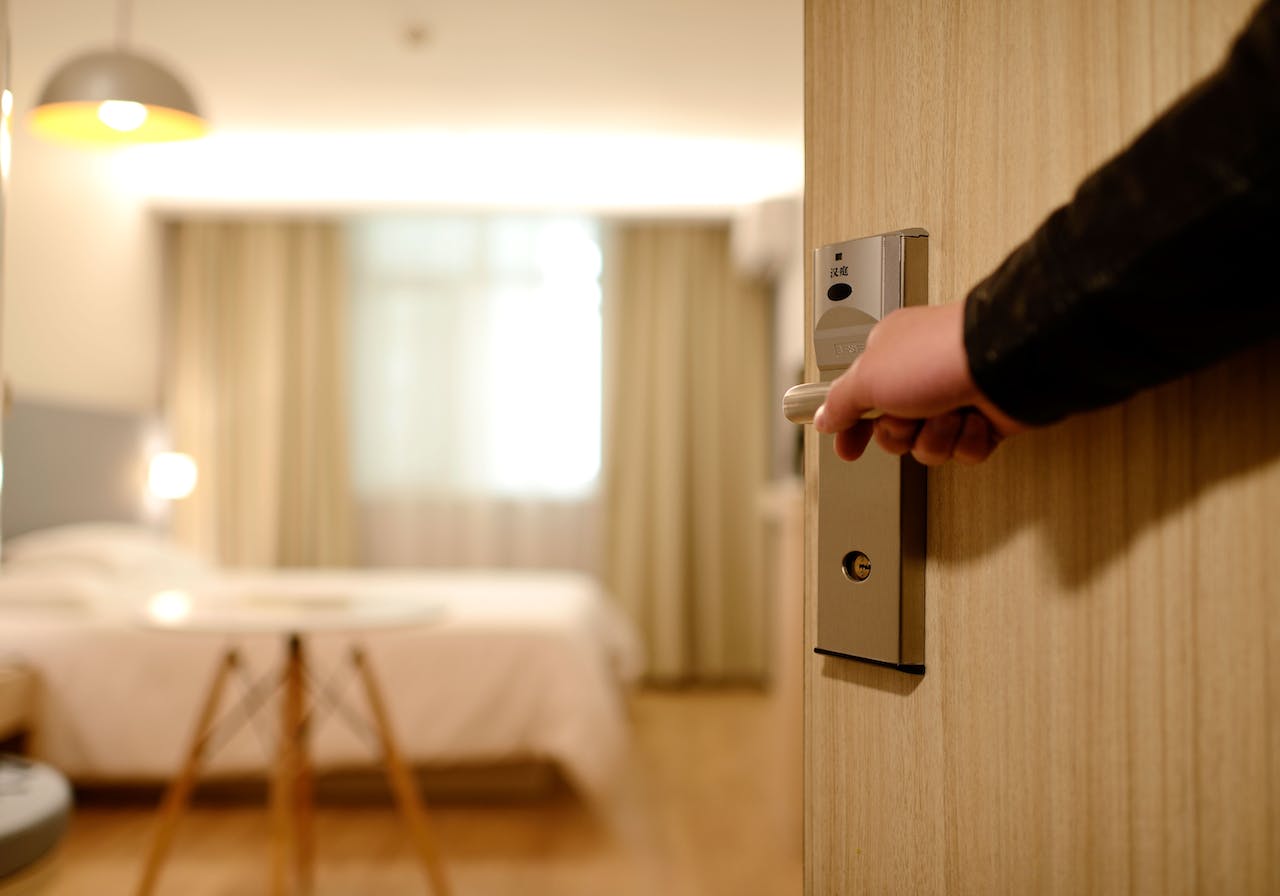Home Smart Lock Installation 101 | Tips and Tricks
Jan 10, 2024

Over the years, integrating smart home technology has significantly transformed our approach to home security. Smart locks, in particular, have emerged as a leading solution, offering convenience, remote accessibility, and enhanced protection. Whether you want to upgrade or install new front door keypad locks, touchscreen deadbolts, Wi-Fi fingerprint-enabled smart locks or Bluetooth-enabled keyless entry combo sets, there’s a wide selection of smart lock options to choose from for your entry, back, and interior doors.
These smart locks are simple to install and come equipped with pre-set codes and clear set-up instructions, ensuring a seamless transition to high-tech security solutions. If you’re considering smartdoor lock installation for residential property, get started with our step-by-step guide.
Must-Have Tools and Essentials
Before we start, you’ll need the tools and essentials for a seamless and efficient installation process. Here’s what you need for a successful setup:
- Smart lock kit: Includes the smart lock and any necessary accessories.
- Screwdriver: A Phillips head is commonly needed for most installations.
- Drill and drill bits: Required for doors that need additional holes or adjustments.
- Measuring tape: Essential for precise placement and alignment.
- Pencil: For marking drill points or alignment spots.
- Level: To ensure the lock and keypad are perfectly horizontal.
- Batteries: Most smart locks are battery-operated.Wi-Fi network and smartphone: Necessary for app-based lock configuration and control.
Step 1: Choose the Right Smart Lock
Selecting the ideal smart lock for your home is a crucial step in the smart lock installation process. It's not just about aesthetics but more about finding a lock that seamlessly integrates into your daily life, giving you peace of mind without worrying about misplaced keys or accidental lockouts. Choosing the right smart locks is also crucial if you plan to add them to an existing smart home ecosystem. Here’s what to keep in mind:
Compatibility
- Door Type: Ensure the smart lock fits your specific door in terms of size, design, and material.
- Smart Home Systems: Compatibility with systems like Apple HomeKit, Google Assistant, or Amazon Alexa is crucial for seamless integration. This allows for voice control and integration with other smart home devices.
Keyless Entry Method
- Bluetooth and Wi-Fi: These keyless locks connect to your smartphone for remote access, allowing you to lock and unlock your door from anywhere. Wi-Fi connectivity usually offers more features, like access logs and remote control, whereas Bluetooth smart lock installation is often used for close-range control.
- Touchscreen: Touchscreen locks provide a sleek, modern look and often feature a numeric keypad where you can enter a code to unlock your door.
- Touchpad: Similar to touchscreens but with physical buttons, touchpads are ideal for those who prefer a tactile feel.
- Biometrics: Biometric locks use fingerprint recognition for entry, offering high security and convenience. They’re beneficial for quick entry without needing keys or remembering codes.
Personal Needs
- Remote Access: Consider if you want to control your lock remotely. This is particularly useful for letting in guests or service providers when you're not at home.
- Integration with Smart Devices: If you have a smart home ecosystem, you might want a smart door lock installation that blends with other devices, like bright lights or security systems, for automated routines.
- Customization and Control: Look for locks that offer user-friendly apps with customizable features like temporary access codes, auto-lock, and geofencing.
Read the Manufacturer’s Guidelines
- Security Standards: Check if the lock meets industry security standards and has features like built-in alarms or tamper alerts.
- Installation Feasibility: Assess whether the lock can be self-installed or requires professional assistance.
- Warranty and Support: Ensure the manufacturer offers a good warranty and customer support in case of technical issues.
Step 2: Remove Existing Hardware
Removing existing door hardware is an essential step in the smart lock installation process. This step clears the way for your new smart lock, ensuring the installation is neat and the new lock functions optimally.
- Uninstall Old Lock: Use a screwdriver to remove the existing deadbolt, latch, and strike plate.
- Preserve Components: Keep the old hardware for future use or as a backup.
Step 3: Install the Smart Lock
The actual installation of the smart lock is a critical phase where precision and attention to detail are key. Following the manufacturer’s instructions closely will ensure your smart lock functions as intended.
- Mounting Plate: Attach it to the interior side of the door, aligned with the deadbolt hole.
- Deadbolt Installation: Insert and secure it from the exterior side.
- Exterior Part Attachment: Align and secure the exterior part of the lock.
- Interior Part Attachment: Connect and secure the interior part to the mounting plate.
- Final Securing: Ensure all smart door lock installation components are tight, and the lock is level.
Step 4: Connect and Configure the Smart Lock
This step involves bringing your smart lock to life by connecting it to your digital ecosystem. It’s a crucial phase where you personalize the lock settings to fit your lifestyle.
- Battery Insertion: If your lock is battery-powered, insert and replace the batteries as needed.
- App Installation: Download the lock’s app on your smartphone.
- Wi-Fi Connection: Connect the lock to your Wi-Fi network through the app.
- Account Setup: Create or log into your account for personalized settings.
- Lock Configuration: Add the smart lock to your app and customize settings like access codes and notifications.
Step 5: Test the Smart Lock
Testing your smart lock post-installation is crucial for ensuring everything works as it should. This step verifies your installation's effectiveness and the lock's functionality.
- Lock and Unlock: Use the app, keypad, touchscreen, or other access features to test locking and unlocking and access-sharing functions.
- Verify Settings: Confirm all custom settings are working correctly.
Step 6: Secure the Door

Securing the door involves fine-tuning the installation to ensure the lock operates smoothly and efficiently. This step is about ensuring longevity and reliability.
- Deadbolt Operation: Check for smooth extension and retraction.
- Adjustments: Make necessary adjustments for optimal lock performance.
- Strike Plate Installation: Install or reposition the strike plate for better alignment.
By following these detailed steps, your smart lock installation process should be smooth and efficient, resulting in a secure and convenient entry system for your home.
Conclusion
With smart door lock installation complete, you're now part of the ever-growing community of smart home enthusiasts, enjoying the blend of security and convenience that modern keyless entry locks offer. Whether you're at home or away, you can rest assured that your residence is secure and accessible at your convenience. Want to learn more about smart locks or shop for keyless entry locks? Visit Door Locks Direct and explore our blog today.

